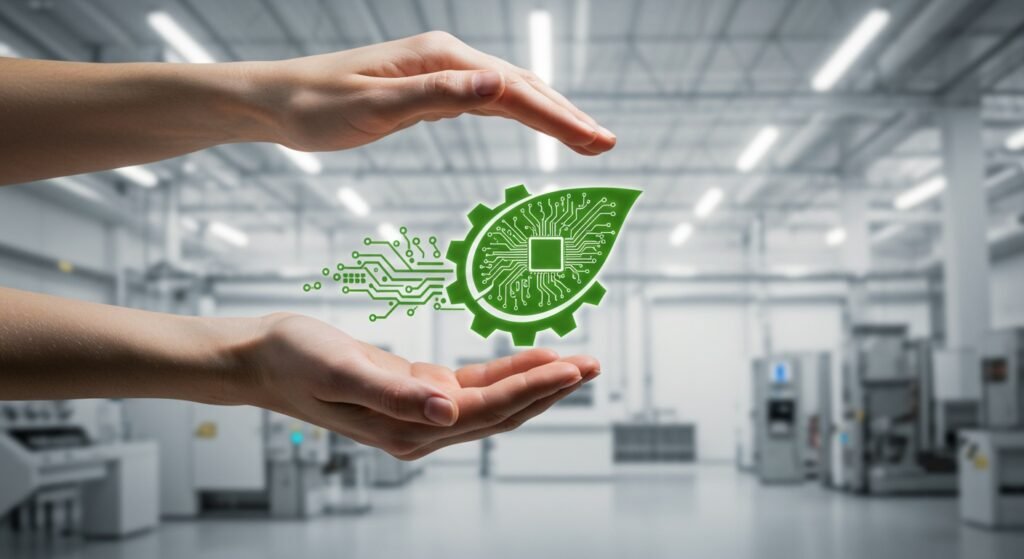In today’s rapidly evolving world, the spotlight on environmental responsibility has never been brighter. Businesses and consumers alike are increasingly aware of the ecological footprint left by product creation and consumption. This growing consciousness has propelled Sustainability in Industrial Design from a niche concept to a fundamental imperative. Industrial designers are now tasked with the critical challenge of creating products that are not only functional and aesthetically pleasing but also environmentally benign throughout their entire lifecycle. This article explores the core principles, innovative approaches, and the profound impact of integrating sustainability into industrial design practices, ensuring a greener, more responsible future for manufacturing and consumption.
- The Imperative of Sustainability in Industrial Design
- Key Principles of Sustainable Industrial Design
- Innovative Approaches and Technologies
- Challenges and Future Trends
The Imperative of Sustainability in Industrial Design
The shift towards Sustainability in Industrial Design is no longer a choice but a necessity. The cumulative effect of past industrial practices has led to significant environmental degradation, from resource depletion to massive waste generation.
Environmental Impact of Traditional Design
Historically, product design often prioritized cost, function, and aesthetics over environmental considerations. This led to a linear “take-make-dispose” model, resulting in enormous waste, pollution, and inefficient resource use. Products were designed for planned obsolescence, contributing to landfills and consuming finite resources at an unsustainable rate. Understanding this legacy is the first step towards rectifying it.
Consumer Demand and Brand Reputation
Modern consumers are increasingly environmentally conscious. They demand products that align with their values, leading to a surge in demand for eco-friendly and ethically produced goods. Brands that proactively integrate sustainable practices into their industrial design not only meet this demand but also enhance their reputation, build customer loyalty, and gain a competitive edge. Transparency about sustainable practices is becoming a powerful marketing tool.
Key Principles of Sustainable Industrial Design
Embracing sustainability requires a fundamental rethinking of the design process. Several core principles guide designers toward more eco-conscious outcomes.
Life Cycle Assessment (LCA)
LCA is a crucial tool for evaluating the environmental impacts of a product throughout its entire lifespan, from raw material extraction, through manufacturing, distribution, use, repair, and maintenance, to its final disposal or recycling. By systematically analyzing each stage, designers can identify hotspots of environmental impact and make informed decisions to reduce them.
Material Selection and Circular Economy
Choosing the right materials is paramount. Sustainable industrial design emphasizes the use of renewable, recycled, recyclable, and non-toxic materials. The goal is to move towards a circular economy model, where materials and products are kept in use for as long as possible, minimizing waste and maximizing resource efficiency. For more insights on this, refer to our Resource Efficiency Guide.
Design for Disassembly and Recyclability
Products should be designed so they can be easily disassembled at the end of their life, allowing components to be reused, repaired, or recycled. This involves minimizing the use of mixed materials that are difficult to separate, using reversible fasteners instead of permanent adhesives, and clearly labeling materials for easy sorting.
Innovative Approaches and Technologies
New technologies and design philosophies are enabling unprecedented levels of sustainability.
Biomimicry and Nature-Inspired Design
Biomimicry involves drawing inspiration from nature’s time-tested designs and processes to solve human problems sustainably. For example, designing products that self-assemble, self-heal, or are entirely biodegradable, mimicking biological systems, offers profound opportunities for eco-innovation.
Additive Manufacturing (3D Printing)
3D printing significantly reduces material waste compared to traditional subtractive manufacturing methods. It allows for on-demand production, intricate geometries that use less material, and localized manufacturing, thereby reducing transport emissions. This technology holds immense promise for sustainable product development.
Digital Tools for Sustainable Design
Software tools for LCA, material databases, and simulation can help designers assess environmental impacts early in the design process, optimize material use, and predict product lifespan and recyclability. These digital aids are indispensable for effective sustainable design.
Challenges and Future Trends
While the momentum for sustainability is strong, several challenges remain. However, the future looks promising with evolving trends.
Overcoming Cost Barriers
Initially, sustainable materials or processes might appear more expensive. However, long-term benefits like reduced waste disposal costs, improved brand image, and compliance with regulations often outweigh initial investments. Governments and organizations are also offering incentives for green innovation.
Policy and Regulation
Increasingly, governments worldwide are implementing stricter environmental regulations and product stewardship laws. These policies, such as extended producer responsibility (EPR), mandate that manufacturers take responsibility for the entire lifecycle of their products, including disposal. Staying abreast of these changes is crucial. For detailed insights into global policies, you can refer to reports from organizations like the United Nations Environment Programme (UNEP).
| Regulation Type | Example | Impact on Industrial Design |
|---|---|---|
| Material Restrictions | RoHS (Restriction of Hazardous Substances) | Requires designers to select compliant, non-toxic materials. |
| Product Recyclability Directives | WEEE (Waste Electrical and Electronic Equipment) | Mandates design for easy disassembly and material recovery. |
| Energy Efficiency Standards | Energy Star | Encourages design of products that consume less energy during use. |
The Role of Industrial Engineering
The principles of industrial engineering are becoming intrinsically linked with sustainable design. Industrial engineers optimize processes, reduce waste, and improve efficiency across supply chains, complementing the efforts of industrial designers. Their expertise in systems thinking helps integrate sustainability not just into product design but into the entire operational framework of a company. Collaboration between industrial designers and engineers is key to achieving truly holistic sustainable solutions.
The journey towards full sustainability in industrial design is ongoing, but the progress is undeniable. By adopting life cycle thinking, embracing innovative materials and technologies, and responding to consumer and regulatory pressures, industrial designers are at the forefront of a profound transformation. Their work is not just about creating products; it’s about shaping a future where economic prosperity and environmental stewardship go hand-in-hand. Embracing sustainable industrial design is an investment in our planet, our societies, and the long-term viability of businesses worldwide.


